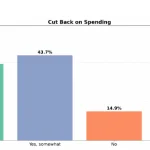In order to achieve an “ally” score, teachers must agree to statements such as “My classroom or learning space includes visual labels (e.g., rainbow flags, pink triangles, unisex bathroom signs) marking it as a safe space for LGBTQ students.”
The Centers for Disease Control and Prevention (CDC) is testing school teachers’ levels of “LGBTQ inclusivity” with self-assessment handbooks that urge them to “commit to change” if they aren’t deemed to be inclusive enough, said the government agency on Tuesday.
In a tweet from the CDC’s Division of Adolescent and School Health, they wrote: “School administrators: Our LGBTQ inclusivity self-assessment tool can help you quickly gauge inclusivity at your school. See your score today and learn ways to increase inclusivity.”
School administrators: Our LGBTQ inclusivity self-assessment tool can help you quickly gauge inclusivity at your school. See your score today and learn ways to increase inclusivity: https://t.co/mXgPtVtg24 pic.twitter.com/R2cWbynZ1n
— CDC’s Division of Adolescent and School Health (@CDC_DASH) December 27, 2022
The post linked to the 32-page handbook that includes three categories of purported “inclusivity,” and what changes the teacher should make based on their results. The “highly inclusive” teachers are labeled as an “awesome ally,” the in-between teachers are ranked as “moderately inclusive” who are “beginning to break through,” and the lowest-scoring group, “minimally inclusive,” urges educators to “commit to change.”
In order to achieve an “ally” score, teachers must agree to statements such as “My classroom or learning space includes visual labels (e.g., rainbow flags, pink triangles, unisex bathroom signs) marking it as a safe space for LGBTQ students.”
The handbook also quizzes teachers on if they refer to romantic relationships in gender-neutral terms such as “partner” as opposed to “boyfriend” or “girlfriend,” using preferred names and pronouns of trans students rather than the ones they were born with, and using terms like “a body with a penis,” or “a body with a vagina” instead of “male” or “female” during sexual education.
According to the Daily Caller, the CDC has been issuing these self-assessment handbooks since October 2020.
Story cited here.
























